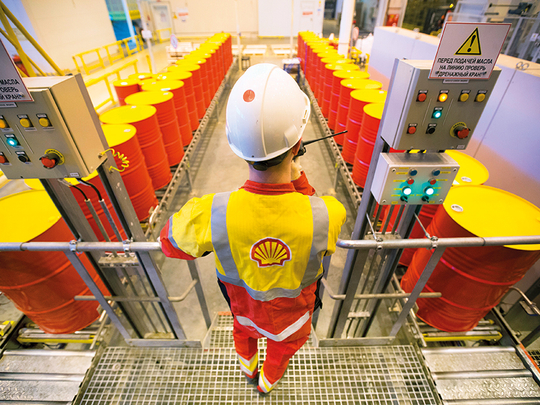
London: Royal Dutch Shell reported on Thursday a 42 per cent rise in first-quarter profit to its highest in more than three years on stronger oil prices and production, but its shares fell as the oil major’s cashflow missed forecasts.
Expectations are high for Shell to continue to generate strong profits and cashflow after the Anglo-Dutch company beat larger rival Exxon Mobil on both fronts in 2017 thanks to cost cuts and higher efficiencies.
But Shell’s shares were 1 per cent lower at 0755 GMT as cashflow fell short of forecasts, even though profits rose more sharply than expected to $5.3 billion (Dh19.5 billion). The broader European energy index was up 0.5 per cent.
“The focus for the big oils in recent months has been the return to free cashflow, particularly given how strong Q1 normally is seasonally for the group,” analysts at Barclays said in a note, which said it expected a negative share reaction.
The world’s top oil companies are expected to generate more cash in 2018 than at any other time this decade after three years of cuts, but boards remain cautious amid uncertainty over near-term and long-term prices.
“Shell’s strong earnings this quarter were underpinned by higher oil and gas prices, the continued growth and very good performance of our integrated gas business, and improved profitability in our upstream business,” Chief Executive Officer Ben van Beurden said in a statement.
Shell in the fourth quarter scrapped its scrip dividend in a sign that it was confident of being able to maintain around $15 billion in annual dividend payments without resorting to borrowing after a three-year oil price downturn.
It plans to buy back $25 billion of shares by 2020 in order to offset the dilutive effect of the scrip and its $54 billion acquisition of BG Group.
It did not specify when it would start the programme.
Slightly weaker
After missing expectations the previous quarter, Shell’s cashflow from operations in the first three months of 2018 recovered to $9.43 billion but that was still slightly weaker than $9.5 billion a year earlier. Free cashflow was little changed at $5.178 billion.
Net income attributable to shareholders, based on a current cost of supplies (CCS) and excluding identified items, rose to $5.322 billion, topping a company-provided analysts’ consensus of $5.277 billion. A year earlier, net income was $3.754 billion.
Production grew by 2 per cent to 3.839 million barrels of oil equivalent per day. Earnings for the segment almost tripled from a year earlier.
Income from the refining and marketing segment, known as downstream, weakened due to lower refining margins and plant availability.
Gearing, the ratio between debt and Shell’s market capitalisation was slightly lower from the end of 2018 at 24.7 per cent by the end of March.
Brent oil prices in recent months have risen to $75 per barrel, their highest since late 2014. Prices averaged around $67 a barrel in the first quarter, up nearly 25 per cent from a year earlier.












